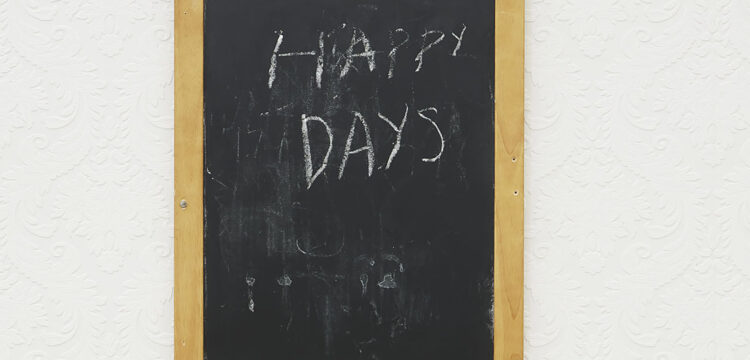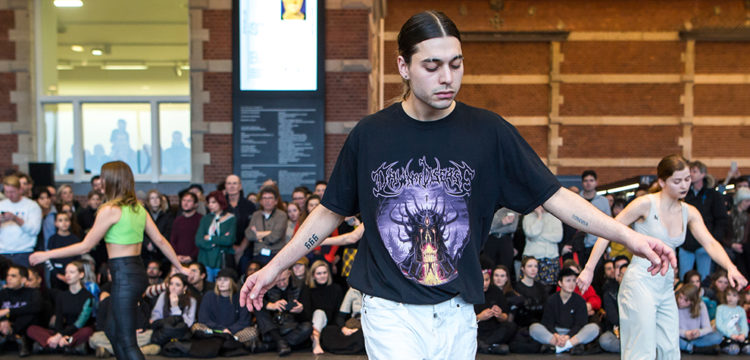What Do Our Bodies Desire?
Subversive performative practices to embody the nomadic subjectivity
If, in a society that is atomising and individualising, our bodies are slowly dying machines bent with sorrow, collective action helps us to imagine alternative forms of humanity. Dancing and wishing collectives break down the boundaries between and within us, creating a space where the identities of self and other can be perceived as something in constant flux and negotiation.
The nomadic embodied subjectivity is a place of transitions and transactions: it is an in-between space where affects are activated and influences are structured so that the distinction between inside and outside is blurred. (Il soggetto corporeo nomade è un luogo di transizioni e trattazioni: è uno spazio intermedio, dove si attivano affetti e si strutturano influenze che spiazzano la distinzione tra l’interno e l’esterno.—Rosi Braidotti)
On December 21st, 1966, during a radio lecture broadcast on France Culture, Michel Foucault considers the ontological status of the body in terms of the relationship between the self and the body. The lecture begins by considering movement, gesture and action as the main ways in which the body appears and becomes a living body itself.
Foucault seems to be talking about the self seen from outside, until the body becomes not only a utopia, but the place from which all the possible utopias branch out. In this way, everything exists in relation to my own body. It is the beginning of all experience and sensory perception, the medium and intermediary between people and things. But although it is my particular point of view, it is the only object that—paradoxically—eludes me. I can see my hands writing, grasping; I can see my legs taking wide strides to cross the landscape that is at the same time passing through me; I can look at the mirror and see my image existing in the most familiar of heterotopias. But here it is impossible for me to see myself in its own wholeness.
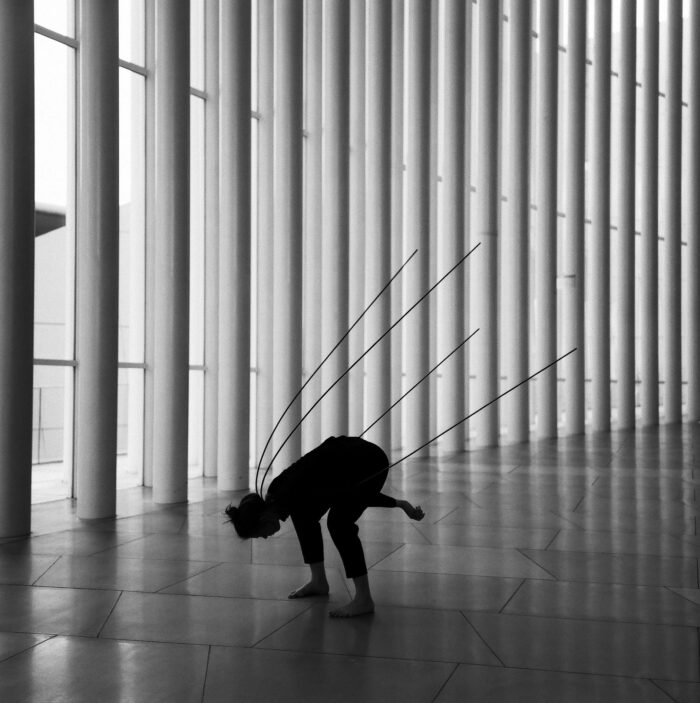
I cannot see myself acting it out as a body among other bodies: how much space does my body fill? How much space am I allowed to occupy?
In an aseptic environment marked by white columns, a woman interacts with a semicircular metal structure. Her body flows fluidly with the ambiguous object and seems to seduce it. She moves around it, beyond it. She shapes herself with the shape until the movements themselves become constrained, constricted, mechanical. Now each bodily ramification acts individually, as part of a codified series, while the body seems to slowly wither away. Supports (2021) is a video realised by artist Agnieska Mastalerz during the Artist Development Programme, 2021—Residency in Luxembourg, as a progression of a photographic series (ongoing) of the same name. Started in 2020, shortly after the SARS-COV-2 closure, from the observation of some steel structures used to shape plants in the Warsaw Botanical Garden, the series analyses how these same structures not only define how plants should grow, but also limit their full ability to freely expand in the territory.
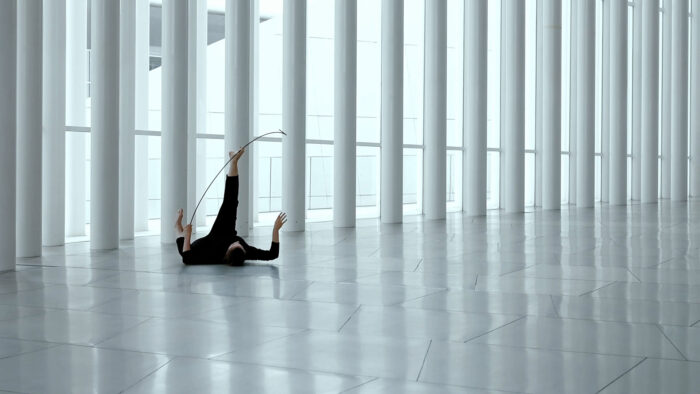
Supports (2021), on the other hand, involves the human body, staging a metaphysical pas de deux in which the boundaries between the one who leads and the one who is led break down. By interacting with the inanimate object, the body studies itself, the movements it can make and the space it is allowed to occupy in relation to the structure that gradually holds it like a levee. The body then tries to find its way through the limits that force it into vulnerability, while a disturbing noise gradually pours into the space, increasing its tension. The artist’s work is like a poem that focuses on physicality not as an object of perception but as a medium able to analyse the restrictive rules that shape our own potential for agency. These rules are whispered by the movements that oscillate between the organic and the inorganic, creating an oxymoric compositional framework: if the space of action is almost immaterial, suspended and indefinite, the human is disturbing, in a constant flux of unstable becoming through the shifts of action and interaction. Agnieska Mastalerz’s work seems to point to the idea of a corporeality that is unable to escape the systems of control and exclusion of bio-capitalism; systems that not only constantly limit us in our agency, but also fold the ways in which we can experience or express feelings. Such systems thus inscribe how we appear in our most intimate relationships and in our social structures.
“In other words, Capital is not a transcendent concept, but rather a radically immanent flow of forces: it has to do with the inscription of bodies into power relations, through a transversal mode that subsumes unconscious affects and desires. Capital aims to saturate social space, its signification systems and forms of interaction.”
(In altre parole, il capitale non è una nozione trascendente, bensì un flusso di forze radicalmente immanente: esso ha a che fare con l’iscrizione dei corpi nelle relazioni di potere, attraverso una modalità trasversale che sussume affetti e desideri inconsci. Il capitale mira a saturare lo spazio sociale, i suoi sistemi di significazione e le forme di interazione.)
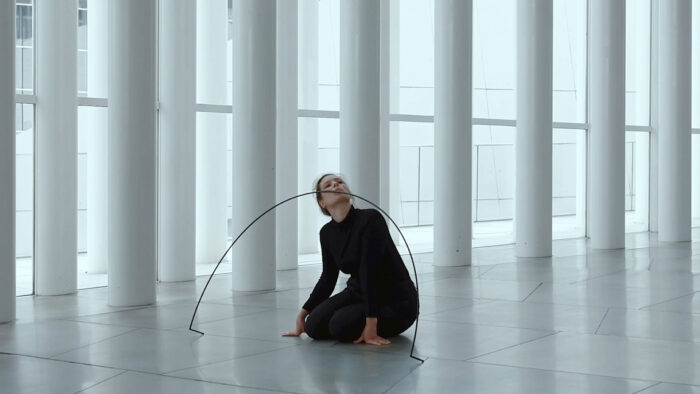
In a system that controls and categorises bodies, where is our freedom?
Today, indeed, the neoliberalised, competitive and hypertrophied body is at the mercy of desires that follow the logic of short-term consumerism. Thus, as bodies, we live in a time punctuated by work rhythms that deprive of quality life itself, since they make us chase a forced performativity that requires us to be constantly productive, active and useful. Moreover, controlling systems not only govern the body, but lead us to monitor ourselves. I am thinking of the phenomenon of body monitoring, an unconscious and regular monitoring of how we appear in public, which puts a strain on female subjectivities in particular. We are overworked, in the grip of constant burn-out, and depression is as prevalent as ever in our more “advanced” societies.
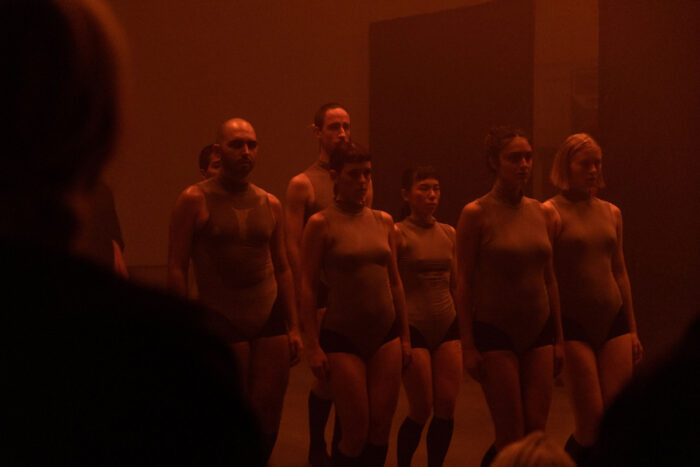
In Caliban and the Witch: Women, the Body and Primitive Accumulation, Silvia Federici explores the development of capitalism by unfolding three centuries of history, from the peasant struggles of the Middle Ages to the witch hunts of the 16th and 17th centuries. Doing so, the author highlights the mechanisms of abjection put in place by hetero-patriarchal society to control and discipline bodiliness. It is a process mediated by the church, the state and the philosophical debate against the organic, living body, which led to the death of the body in order to make it the first labour machine. The goal was to create a new kind of person: an individual whose capacities were altered to homologate social behaviour and the way bodies appeared in society. This process created a conflict in the individual human microcosm, separating the self from corporeality and creating historical and generational trauma. As an object, the human body is examined, vivisected, in order to manipulate its functions. Thus, if the sciences are able to give us back every inch of the skin we inhabit, philosophy has woven a thread of misunderstandings about it. Descartes, above all, addressed the rupture between self and body.
“With the institution of a hierarchical relation between mind and body, Descartes developed the theoretical premises for the work-discipline required by the developing capitalist economy. For the mind’s supremacy over the body implies that the will can (in principle) control the needs, reactions, reflexes over the body; it can impose a regular order on its vital functions and force the body to work according to external specifications, independently of its desires.”
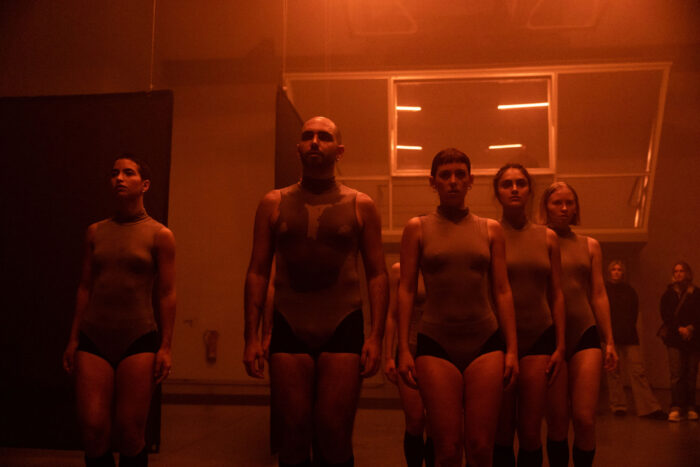
In this system, anything that might challenge the order is made invisible, monstrous, subject to processes of depersonalisation. Bodies are inscribed in a hierarchy of race, gender and class. Hence, they are invested with different meanings at the theoretical level and excluded at the practical level of social life. But above all, the disciplinarisation of the body has been a process of transfiguration of the other and has led to the destruction of community relations. By creating an inwardly divided individual, society has generated atomised, isolated bodies deprived of all desires.
“What died was the concept of the body as a receptacle of magical powers that had prevailed in the medieval world. In reality, it was destroyed. […] This means that the mechanical body, the body-machine, could not have become a model of social behavior without the destruction by the state of a vaste range of pre-capitalist beliefs, practices, and social subjects whose existence contradict the regularization of corporeal behavior promised by Mechanical Philosophy.”
We are machines in a dead body. Inhabitants of a disenchanted, desecrated body, we see pleasure as moral corruption. We repress passions and desires, unable to manage emotions and feelings, alien to ourselves. Far from being a utopian place, the body is the dystopia to which we are condemned.
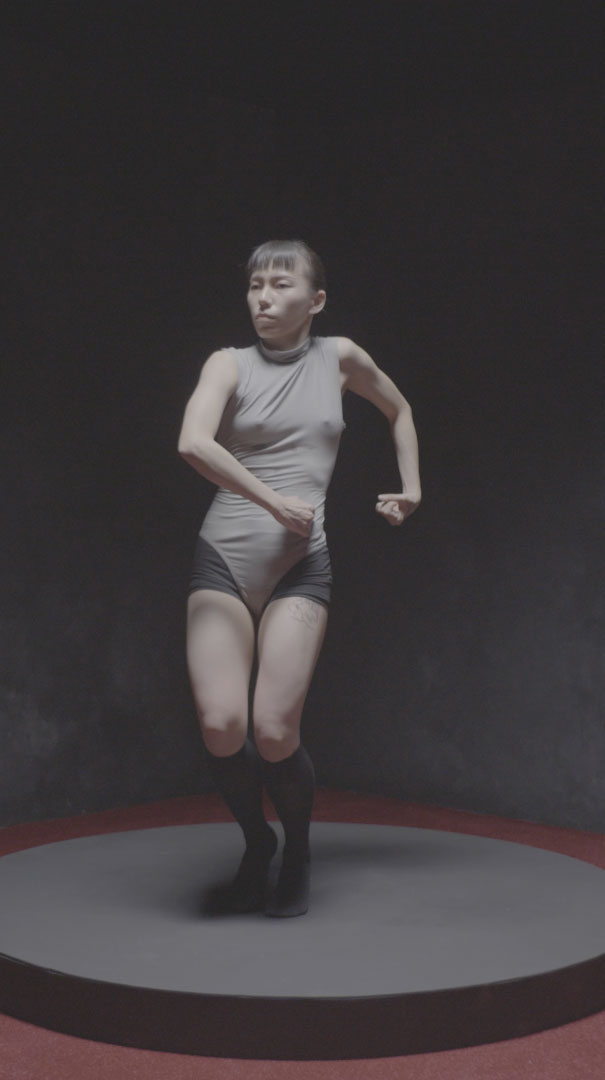
Are we able to create alternative imagery to understand what our bodies desire?
In a twilight environment characterised by modular architecture, eight bodies march in place to the timed rhythm of hypnotic music. They move simultaneously yet disharmoniously. Their identities are erased by the suits they wear. Void of their own singularities, we observe the inhabitants of anonymous bodies. The Space Of Unknowing (2021) is a site-specific performance and installation by artist Søren Siebel and his alter ego Bas Grossfeldt, in which the body both invades the space and achieves self-awareness through its relationship with its senses. Interested in how unconscious corporeality is influenced from the outside and how it simultaneously manifests an inner attitude or identity, the artist creates a choreography based on a fixed dance vocabulary of movements. Starting with the hip walk, physical movements are distorted and deconstructed until even the bodies seem to melt away. Sounds are repeatedly disturbed or combined into polyrhythms; at the same time, thanks to the modular architecture, the perspective of the observer or performer changes.
The performance also involves a succession of individual and group moments through which mutual relationships are established or broken. Thus, at first the performers take up fixed positions in the space, respecting the imposed lexicon; then they are free to improvise, being able to actively take up the impulses of the others, bringing out a connection that breathes through the corporeality and the space. In these collective moments, bodies are drawn to each other: performers come together through synchronous movements until they disperse to a specific point in the space, only to start again. It is within this loop that Glitch emerges, creating a situation in which we inhabit an in-between space, a threshold to subconscious states that plunge us into a perpetual change of physical and immaterial state.
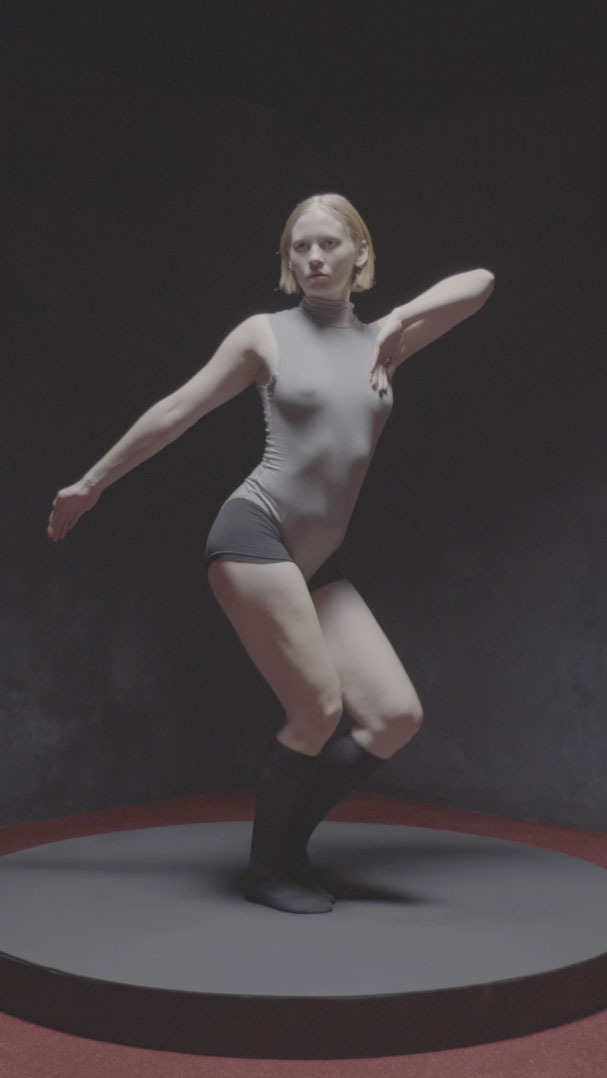
Søren Siebel’s research is like a continuous development of different focuses, always analysing the possibility of arriving at an alternative form of human embodiment. His practice aims at creating immersive experiences in which one’s actions draw a constellation of bodies, space and sound. With The Body Of Nothing (2022), for example, he takes up the rituality of the previous performance and reaches for the concept of nothing. It is a moment in which the body empties itself of all meanings, to the point where it is questioned whether it is possible to perceive the physical state of someone else. In this emptiness, the need for human beings to confine themselves to boundaries and to register themselves in terms of definitions is questioned, in order to step into an atmosphere where ambiguity, complexity and emptiness can be experienced as a condition of emerging from trauma and re-entering the ritual rut. [1] A resonant body is created, embodied by a corporeality that transcends attribution and finds itself in the blend. This corporeality lies somewhere between an almost surreal object and a rudimentary, grotesque human body, making the bodies both dystopian and utopian. These borderland dwellers shape and blend into each other through collective action, like a federation of free bodies, moved by the very spirit of plurality that leads to aggregation.
If we see these performative practices as a moment of place-making in which the identities of self and other can be understood as something constantly shifting and reshaping, we can easily agree with Foucault when he says that in dance the body is dilated along an entire space that is both exterior and interior to it. And it is here, in the encounter and exposure, that we understand what our bodies wish, in a place where desire is the impetus for aggregation, because only stimulated by external impulses do we understand that we are active and perceptive subjects.
In Materialismo radicale. Itinerari etici per cyborg e cattive ragazze (Meltemi, Milano, 2019) Rosi Braidotti tells us about an affirmative power that sees collective action as a fertile ground for the redemption of identities that, in becoming together, rediscover themselves as others. This is so because when a body is placed in a dynamic relationship with other corporealities, it produces knowledge: it is traversed by affectations, a concept from Spinozian philosophy that indicates what the action of one body provokes on another. We only know the effects of this interaction, because in crossing and touching, the body changes, giving rise to concepts and ideas. Affections can be positive or negative, and for Spinoza in particular, what passes through us oscillates between two poles: joy and sadness. “Sad” affections humiliate bodies and reduce their capacity to act; power produces only sad affections in bodies, leading to isolation. But power always produces resistance.
“Nomadic theory relies on autonomous but mutually interconnected communities, group-multitudes and complex singularities engaged in the project of setting up an alternative present.”
(La teoria nomade confida nelle comunità autonome ma mutualmente interconnesse, nei gruppi-moltitudini e nelle singolarità complesse impegnati nel progetto di costituzione di un presente alternativo.)
If we step outside the sphere of visual culture and look at public spaces, we can see how these practices are already taking place, perhaps unconsciously.
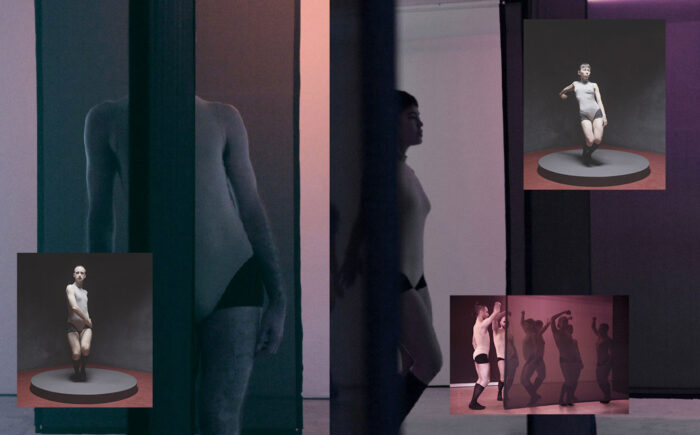
In April 2023, for example, France was rocked by several demonstrations against the pension reform. In this context, the Parisian protest led by Mathilde Caillard [2] to the rhythm of techno went viral and involved a large number of citizens under the slogan “retraites, climat: meme combat” (pensions, climate: the same battle). Dancing and singing are here a political act, a revolutionary means against oppression, and the body is the main instrument of the struggle to manifest a thymotic tendency, that is, the desire to be recognised.
This particular kind of dancing multitude seems to adhere to what Roberto Fratini Serafide, in the paper Coropolitiche della modernità. Collettivi danzanti e comunità desideranti, defines as coropolitics: a neologism that refers to a collective action whose aesthetic formalisation is intrinsically linked to the political meanings it wishes to exhibit. In this context, space signifies the gestures that signify it, and performative actions thus contribute to the re-occupation of a space, shaping and reinventing it.
Uprisings make bodies cry out socially and politically, reminding us of imaginaries and experiences in which the use of actions such as dance and singing, ancestral human behaviours that have always been cathartic and liberating, have a subversive potential because they are ascribed to irrational behaviours neglected by hegemonic biopolitics. When we burst the boundaries within us, between us, the body is no longer a prison and we are the nomadic subjects of Rosi Braidotti: in perpetual flux and undefinable, we embrace the pluralities that inhabit us and rediscover ourselves shifting. In this way, dancing and desiring collectives give an aesthetic resolution to political anxieties and manage to transform social atomisation, individualism and collective narcissism into new common notions and resistances.
[1] The human body expresses itself through ritual practices, i.e. forms of communication mediated by the body. Since the body is a plastic medium for metalinguistic communication, it provides a more direct means of expression than oral discourse, which is always tied to the arbitrary. Ritualistic performances create a connection between bodies and the world, the alliances that are established between the performing, exhibited bodies unfold within a choreography for which each part involved plays an established role, aimed at creating a composition that refers to iconological codes.
[2] The activist is part of the Alternatiba collective, which fights for the climate. She also served as parliamentary assistant to Alma Dufour, deputy of the “La France Insoumise” party.




